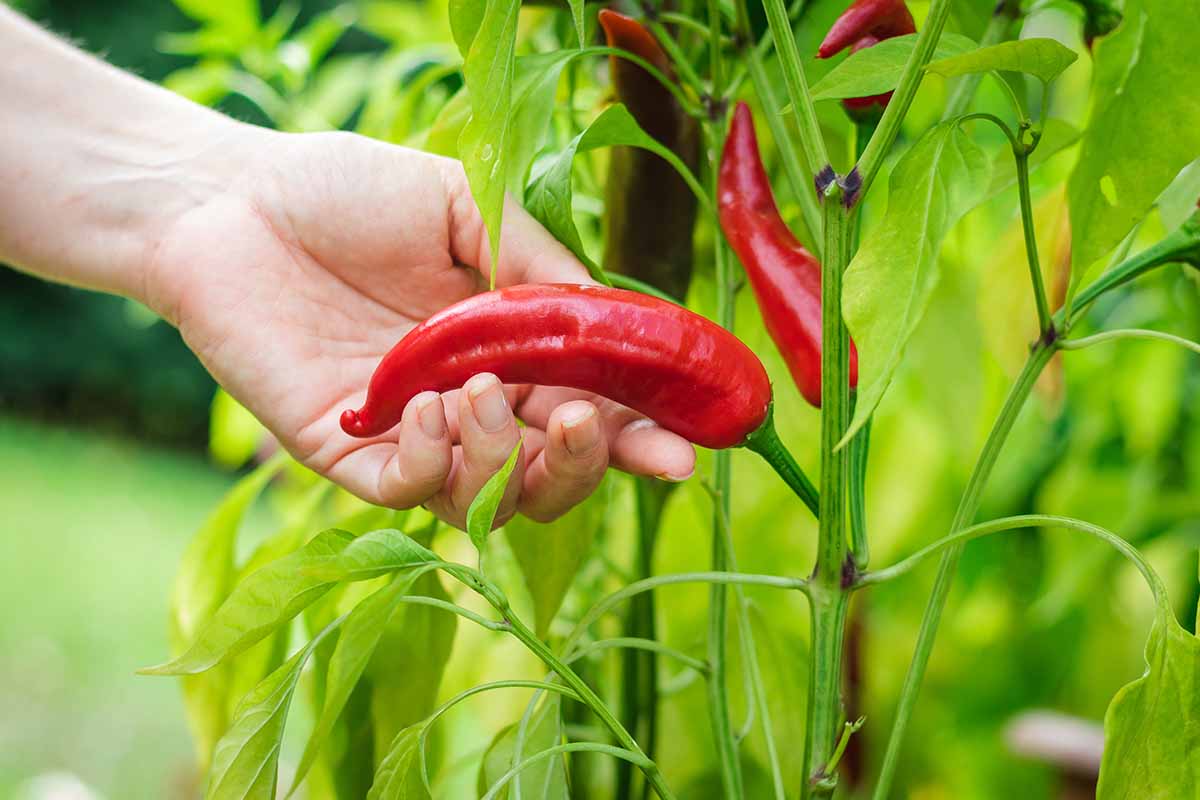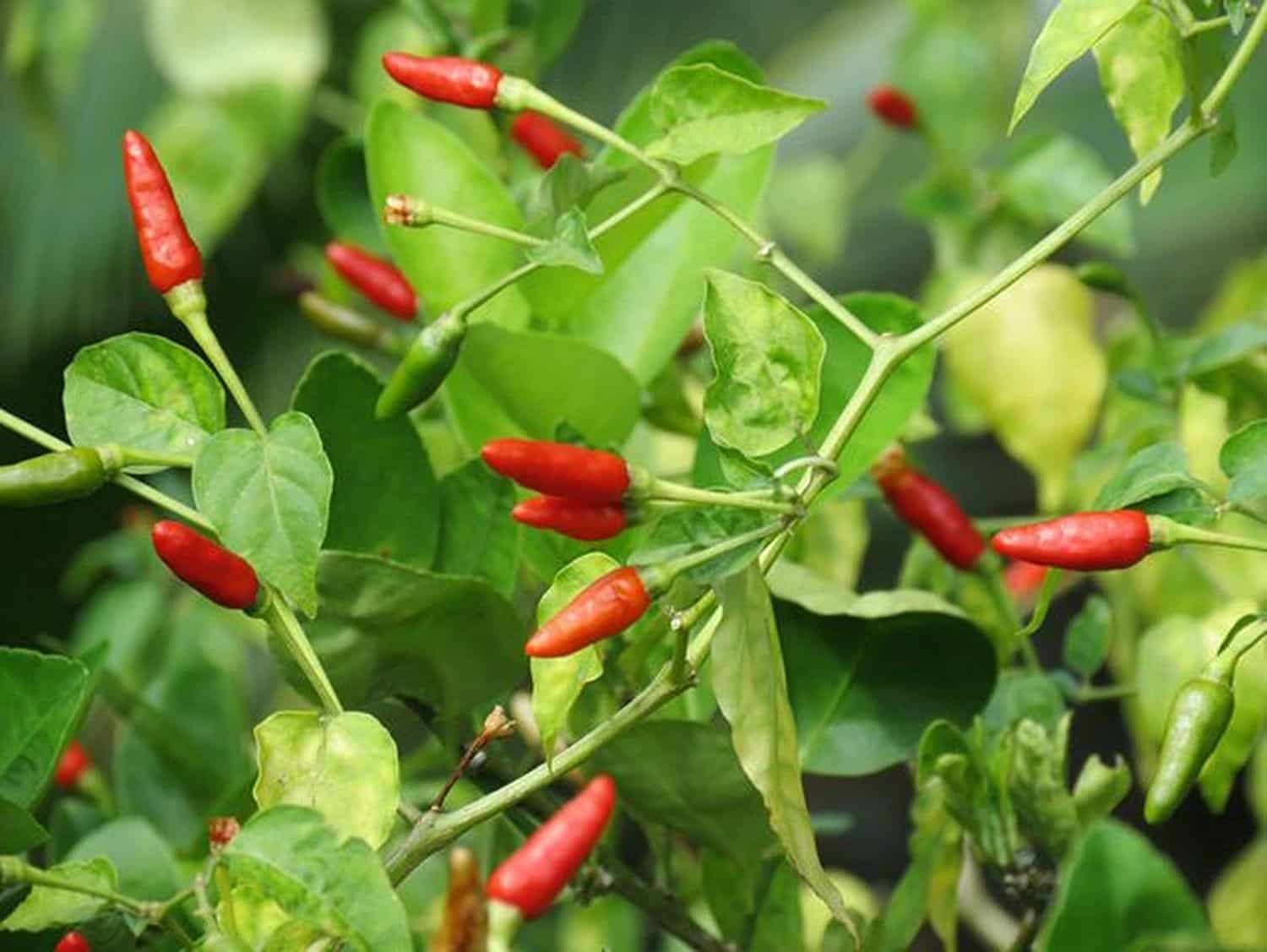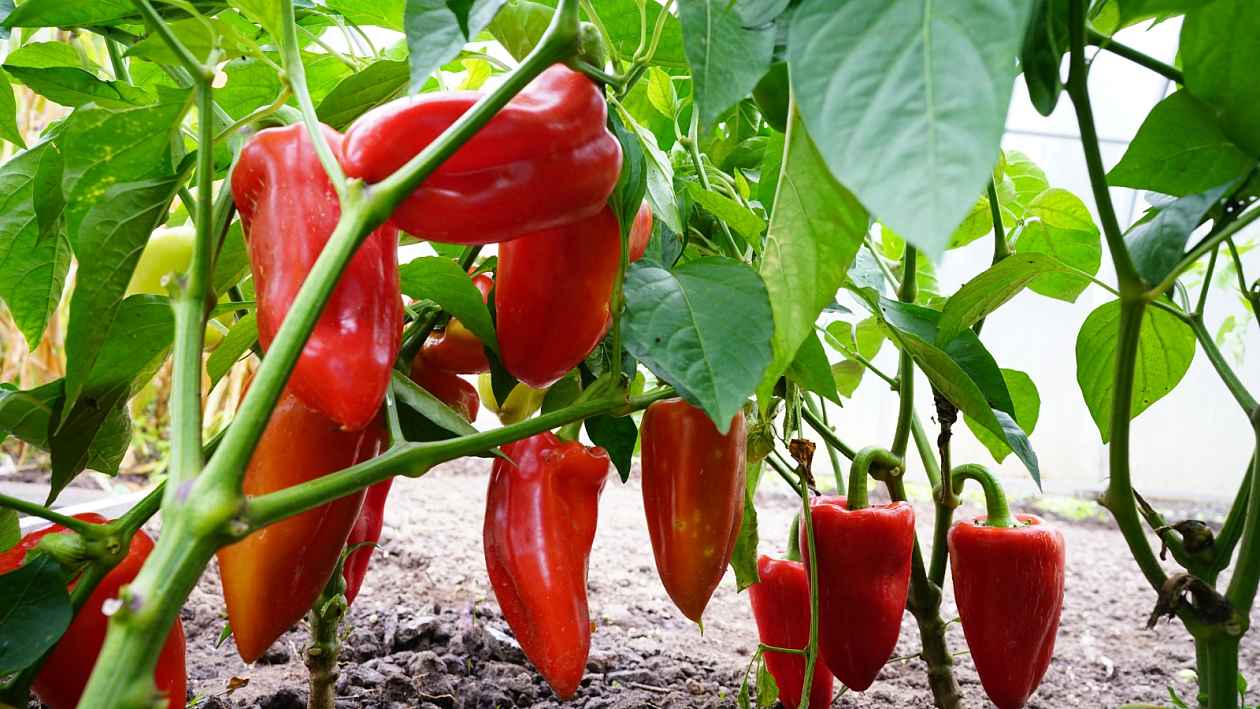Embark on a culinary journey with the small red pepper plant, a vibrant and flavorful addition to any garden or kitchen. With its captivating appearance and versatile uses, this fiery gem offers a unique blend of heat and nutrition that will tantalize your taste buds and invigorate your dishes.
From its compact size to its vibrant red hue, the small red pepper plant exudes a captivating charm. Its compact stature makes it ideal for container gardening or small spaces, while its prolific growth habit ensures a bountiful harvest throughout the growing season.
Plant Profile and Growth Characteristics: Small Red Pepper Plant

Small red pepper plants are a compact variety of Capsicum annuum, known for their vibrant red fruits and ornamental foliage. These plants typically grow to a height of 12-18 inches, with a spread of 12-15 inches. They have a bushy, upright growth habit, with glossy, dark green leaves that provide a striking contrast to the bright red peppers.
Small red pepper plants are relatively easy to grow and can be cultivated in various climates. They prefer well-drained soil with a pH between 6.0 and 7.0. These plants thrive in full sun to partial shade, requiring at least six hours of sunlight per day for optimal growth and fruit production. Regular watering is essential, especially during hot and dry weather, but avoid overwatering as it can lead to root rot.
Lifespan and Growth Rate
Small red pepper plants have a lifespan of approximately two years. They are considered fast-growing plants, reaching maturity within 70-80 days after transplanting. The growth rate can be influenced by factors such as temperature, sunlight, and soil conditions.
Unique Features and Adaptations
Small red pepper plants possess several unique features and adaptations that contribute to their survival and growth. These include:
- Capsaicin Production: Small red pepper plants produce capsaicin, a compound responsible for the spicy flavor of the peppers. Capsaicin acts as a natural deterrent against pests and herbivores, protecting the plant from damage.
- Self-Pollination: These plants are self-fertile, meaning they can produce fruit without the need for cross-pollination. This adaptation ensures successful fruit production even in the absence of pollinators.
Culinary Uses and Nutritional Value

The small red pepper plant offers a range of culinary uses, adding both flavor and heat to various dishes. Its flavor profile is characterized by a sweet and slightly fruity taste with a mild to moderate heat level. The capsaicin content, which is responsible for the heat, varies depending on the variety and growing conditions.
Nutritional Value
This plant is a rich source of essential vitamins and minerals. It contains high levels of vitamin C, an antioxidant that supports immune function and skin health. Additionally, it provides significant amounts of vitamin A, which is crucial for vision and eye health. The pepper also contains potassium, an essential mineral for regulating blood pressure and fluid balance.
- Vitamin C: 120 mg per 100 g
- Vitamin A: 350 mcg per 100 g
- Potassium: 250 mg per 100 g
Furthermore, the small red pepper plant is a good source of antioxidants, such as capsaicin, quercetin, and luteolin. These compounds have been linked to various health benefits, including anti-inflammatory and anti-cancer properties.
Culinary Uses, Small red pepper plant
The small red pepper plant can be used in a variety of culinary applications. It is commonly added to salads, stir-fries, soups, and stews to enhance flavor and add a touch of heat. The peppers can also be grilled, roasted, or pickled to preserve their taste and nutritional value.
- Salads: Adds a crunchy texture and a mild to moderate heat level.
- Stir-fries: Provides a sweet and slightly fruity flavor, balancing the other ingredients.
- Soups and stews: Enhances the flavor profile and adds a subtle warmth.
- Grilled: Develops a smoky and slightly charred flavor, perfect for grilling vegetables or meats.
- Roasted: Brings out the natural sweetness and caramelizes the peppers, creating a delicious side dish.
- Pickled: Preserves the peppers while adding a tangy and slightly spicy flavor.
In addition to its culinary uses, the small red pepper plant is also used in traditional medicine and as an ornamental plant. The leaves and seeds have been used for medicinal purposes, while the plant’s attractive appearance makes it a popular choice for landscaping and home gardens.
Cultivation and Care

The cultivation of small red pepper plants requires specific techniques to ensure their growth and productivity. Understanding the best methods for propagation, planting, watering, and pest control is essential for successful cultivation.
Propagation Methods
Small red pepper plants can be propagated through various methods:
- Seeds: Seeds can be sown directly into the soil or started indoors in seed trays. Germination typically occurs within 7-14 days.
- Cuttings: Stem cuttings taken from healthy plants can be rooted in moist soil or water. Remove the lower leaves and dip the cutting into rooting hormone before planting.
- Grafting: Grafting is a technique where a small red pepper plant is grafted onto a rootstock of a more vigorous pepper variety. This method can improve plant growth and disease resistance.
Planting and Care
Once propagated, small red pepper plants require specific conditions for optimal growth:
- Soil: Well-drained, fertile soil with a pH of 6.0-6.5 is ideal.
- Sunlight: Plants require full sun exposure for at least 6 hours daily.
- Watering: Water regularly, especially during hot, dry weather. Avoid overwatering, as it can lead to root rot.
- Fertilization: Fertilize plants every 2-3 weeks with a balanced fertilizer.
Pest Control
Common pests that affect small red pepper plants include aphids, spider mites, and thrips. To control these pests:
- Organic methods: Use insecticidal soap, neem oil, or companion planting with repellent plants like marigolds or basil.
- Chemical methods: Use pesticides labeled for use on peppers, following instructions carefully.
Harvesting and Storage
Small red peppers are ready to harvest when they reach full color and firmness. To harvest:
- Cut the peppers from the plant with sharp shears.
- Store peppers in a cool, dry place with good ventilation.
With proper cultivation and care, small red pepper plants can produce an abundant harvest of flavorful and nutritious peppers.